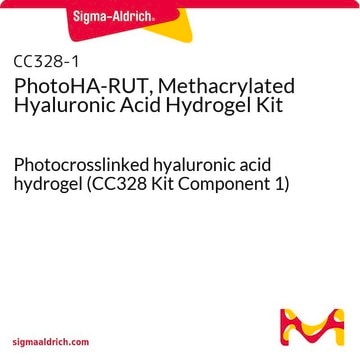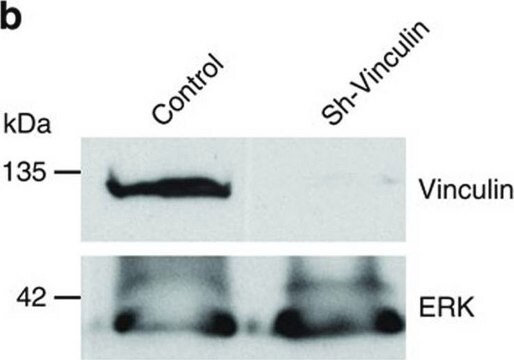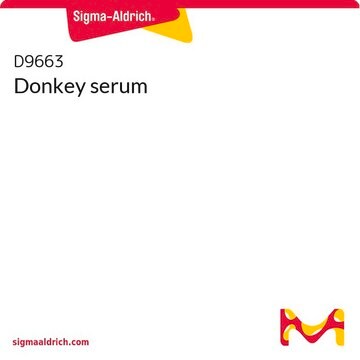MAB3574
Anti-Vinculin Antibody
CHEMICON®, mouse monoclonal, VIIF9 (7F9)
Sinônimo(s):
Anti-CMD1W, Anti-CMH15, Anti-HEL114, Anti-MV, Anti-MVCL
About This Item
Produtos recomendados
Nome do produto
Anti-Vinculin Antibody, clone VIIF9 (7F9), clone VIIF9 (7F9), Chemicon®, from mouse
fonte biológica
mouse
Nível de qualidade
forma do anticorpo
purified antibody
tipo de produto de anticorpo
primary antibodies
clone
VIIF9 (7F9), monoclonal
reatividade de espécies
mouse, human, pig, rabbit, monkey, bovine
embalagem
antibody small pack of 25 μg
fabricante/nome comercial
Chemicon®
técnica(s)
immunocytochemistry: suitable
immunohistochemistry: suitable (paraffin)
immunoprecipitation (IP): suitable
western blot: suitable
Isotipo
IgG1
nº de adesão NCBI
nº de adesão UniProt
Condições de expedição
ambient
modificação pós-traducional do alvo
unmodified
Informações sobre genes
human ... VCL(7414)
Especificidade
Imunogênio
Aplicação
Signaling
Cytoskeletal Signaling
Immunohistochemistry on frozen and paraffin embedded tissue sections. Suggested fixation for frozen tissue sections is acetone fix for 6 minutes at room temperature. For formalin fixed paraffin embedded tissue sections: microwave in 0.01M citrate buffer (pH 6.0) for 8-10 minutes (note that all microwaves differ and adjustments may need to be made). If necessary follow with enzyme digestion (0.01% pronase for 10 mintues). Suggested blocking agent is fetal bovine serum. The antibody has also been used successfully on methyl-Carnoy fixed tissue.
Immunocytochemistry (see application notes below).
Immunoprecipitation. Suggested extraction buffer is 20 mM Tris-HCl, pH 7.4, 150 mM NaCl, 1% Triton X-100, 0.1% SDS, 0.5% deoxycholic acid-NaCl and 0.5 mM PMSF. Final reaction volume is 1 mL and suggested capture agent is agarose conjugated anti-mouse IgG. Note that the muscle-specific isoform, meta-vinculin (MW 150 kDa) will co-precipitate.
Optimal working dilutions must be determined by the end user.
APPLICATION NOTES FOR MAB3574
IMMUNOCYTOCHEMISTRY
For cultured cells, use the following method: 1) wash cells twice with buffer "A" (100 mM Pipes (to make it dissolve, titrate with KOH), 0.5mM MgCl2, 0.1 mM EDTA, 0.01M EGTA (to make it dissolve, titrate with KOH), pH 6.9); 2) fix 15 min @RT (3.7% formalin, 0.2% Triton X-100, 2M Glycerol, prepared on buffer A); 3) wash 3 times with buffer "A"; 4) proceed with incubation with primary Abs, etc.
Qualidade
forma física
Armazenamento e estabilidade
Nota de análise
POSITIVE CONTROL:
Vinculin is present in all cell types.
Outras notas
Informações legais
Exoneração de responsabilidade
Não está encontrando o produto certo?
Experimente o nosso Ferramenta de seleção de produtos.
recomendado
Código de classe de armazenamento
10 - Combustible liquids
Classe de risco de água (WGK)
WGK 2
Ponto de fulgor (°F)
Not applicable
Ponto de fulgor (°C)
Not applicable
Certificados de análise (COA)
Busque Certificados de análise (COA) digitando o Número do Lote do produto. Os números de lote e remessa podem ser encontrados no rótulo de um produto após a palavra “Lot” ou “Batch”.
Já possui este produto?
Encontre a documentação dos produtos que você adquiriu recentemente na biblioteca de documentos.
Os clientes também visualizaram
Active Filters
Nossa equipe de cientistas tem experiência em todas as áreas de pesquisa, incluindo Life Sciences, ciência de materiais, síntese química, cromatografia, química analítica e muitas outras.
Entre em contato com a assistência técnica










